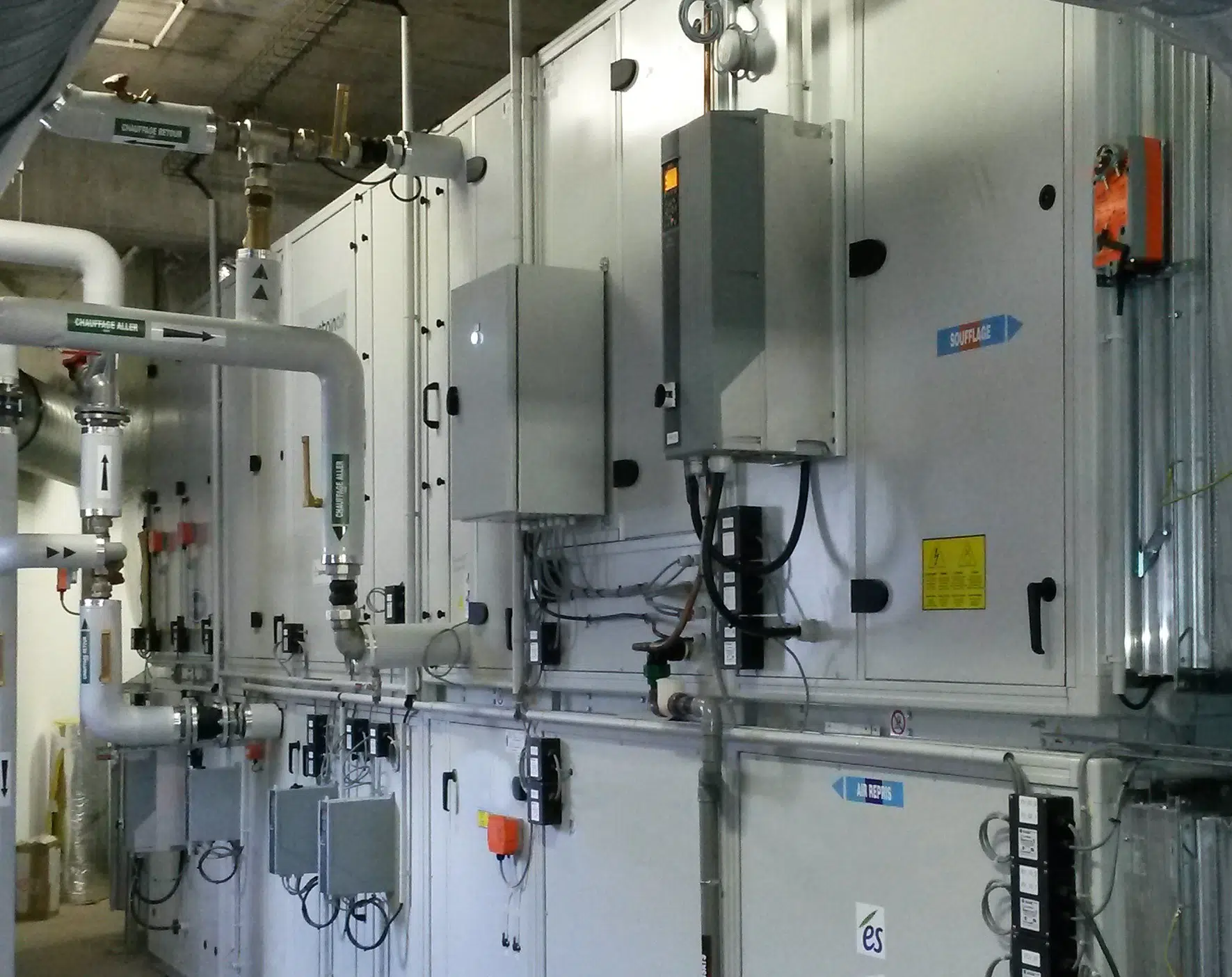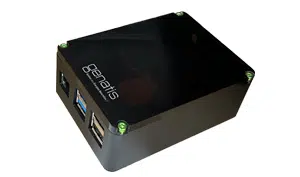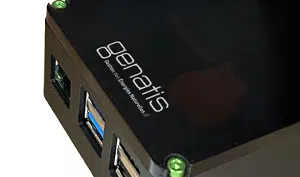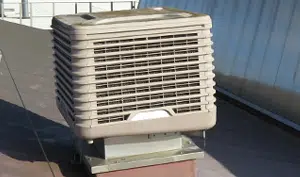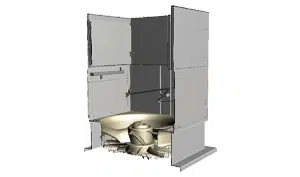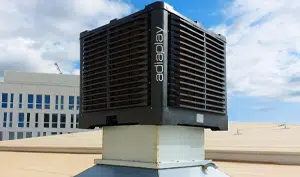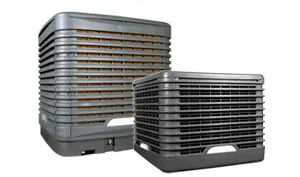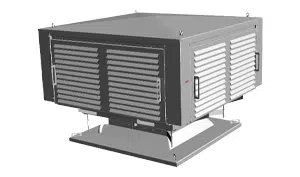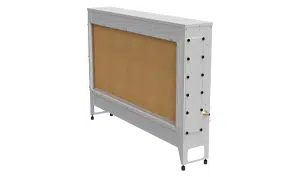
Controls & Adiabatic Cooling Systems
The adiabatic cooling solution lowers the temperature inside the building. Managing this solution leads to better control of the installation. The equipment and sensors allow for managing indoor humidity levels, as well as indoor and outdoor temperatures. Based on information received from various sensors, the controller will trigger actions on the adiabatic system as needed.
When cooling is not required, only fresh air intake is sufficient. Activation is thus automated through the control system, optimizing to minimize energy expenses and ensuring optimal comfort within the building. However, it’s important to integrate this control with openings that depressurize the building, expel hot air, and discharge humidity from the volume.
The ADIABOX range encompasses both the coolers and the dedicated controller. In installations with multiple ADIABOX units, they are designated as either «master» or «slave» in the operational scenario planned. The master ADIABOX controller acts as the conductor for the entire Genatis system, including facade and roof openings.
Direct coupled cooling
For all Air Handling Units (AHUs), it is possible to incorporate a cooling unit on the exhaust air.
This allows the supply air temperature to be lowered using the AHU’s heat exchanger.
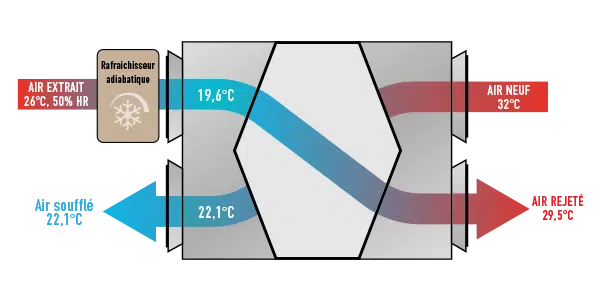
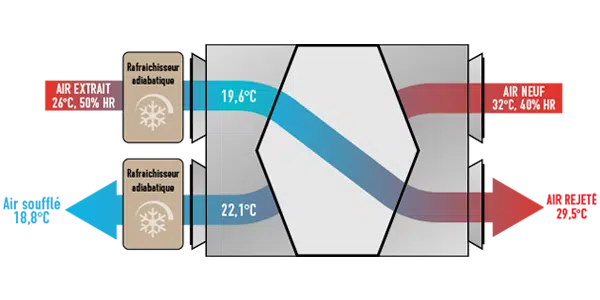
Typical Case
Adiabatic cooler directly on the exhaust air.
Coupled Case (Twin configuration)
Adding a second adiabatic cooling system directly to the blown air.
Typical operating scenario including night-cooling and adiabatic mode during the summer period:
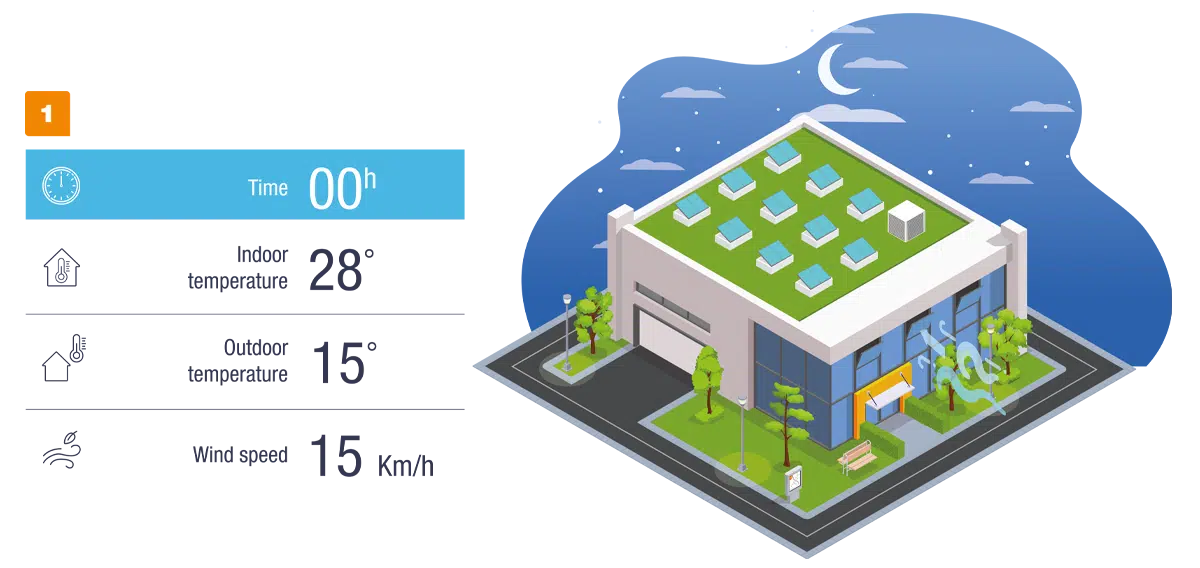
The PLC activates the opening of the skylights and façade openings to maximize the efficiency of the building’s ventilation, exhausting a high volume of stale air, with very little energy demand, by taking advantage of the night cooling.
The PLC closes the façade openings. The fan of the adiabatic module starts working and blows air into the building to improve its cooling.
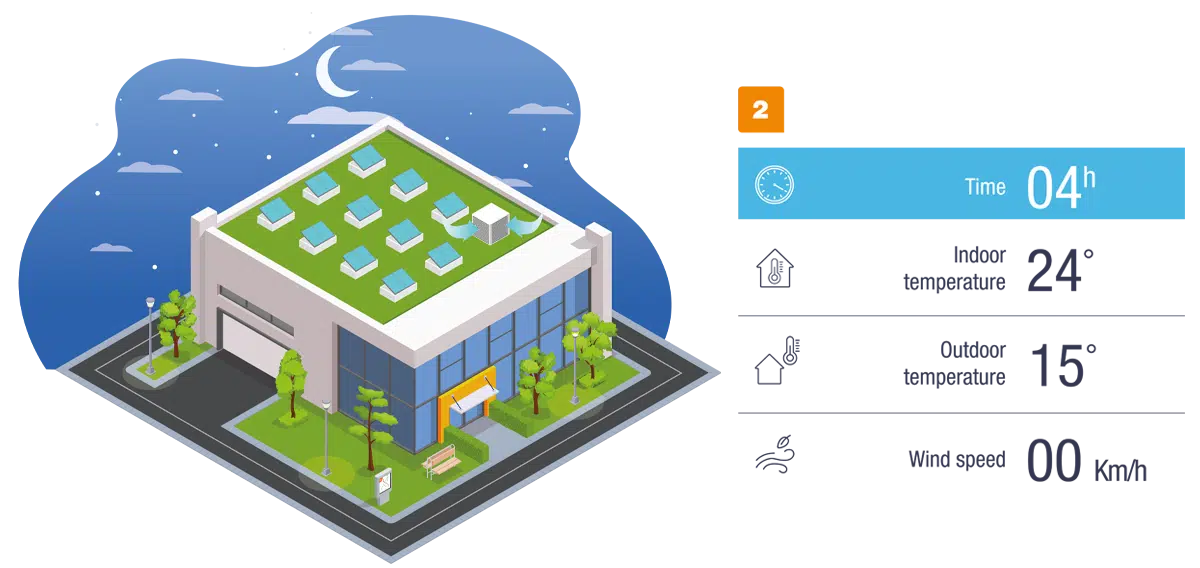

The adiabatic module is fully operational (fan and water pump) and transforms the outside air, hot and dry, into cooler and humid air to lower the temperature inside the building. An open skylight serves to evacuate excess heat and moisture.
The use of an adiabatic cooling system will maintain a comfortable temperature inside the building regardless of the rise in outside temperature.

